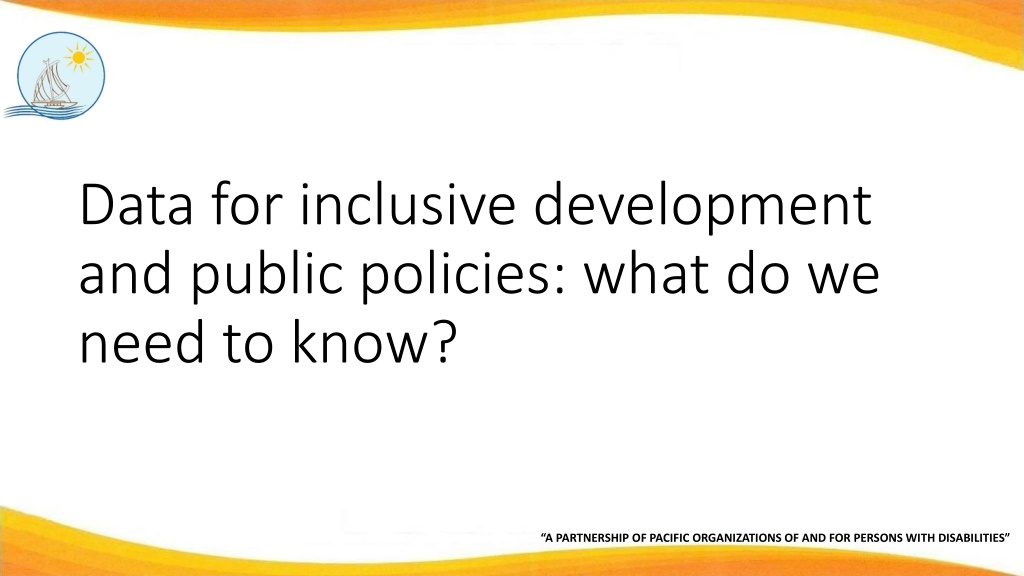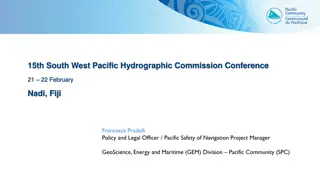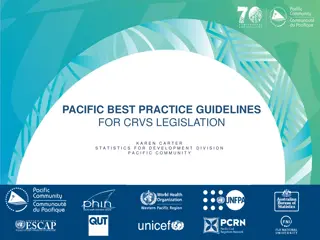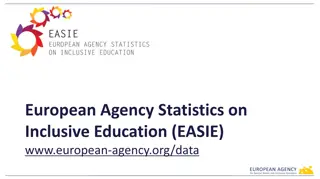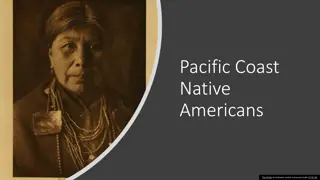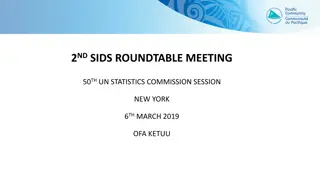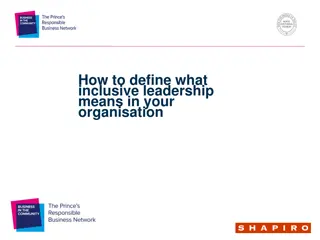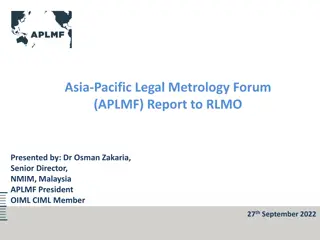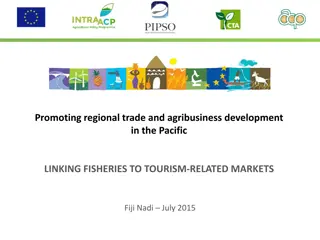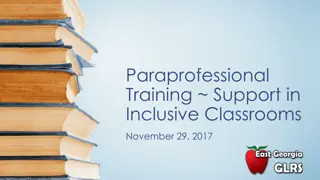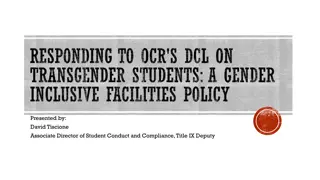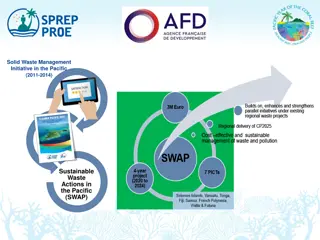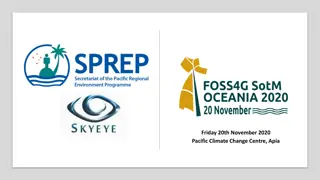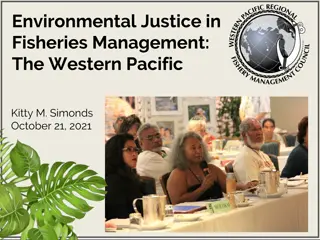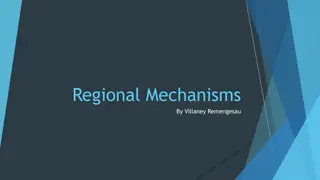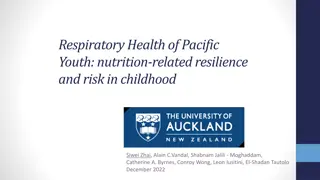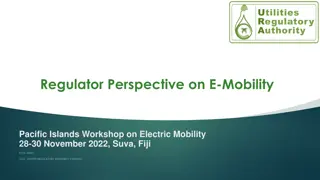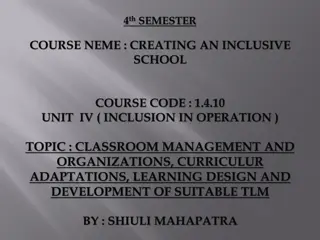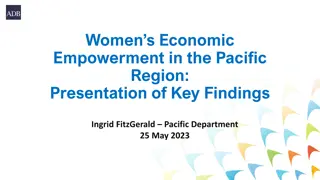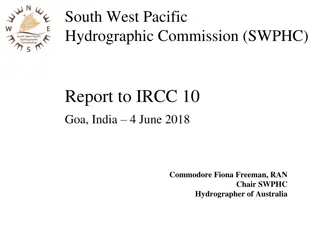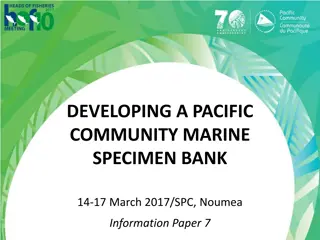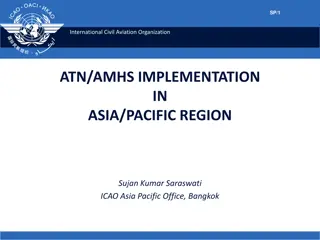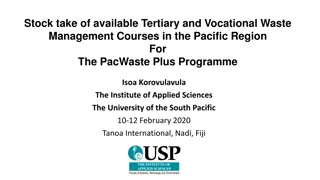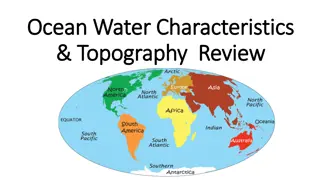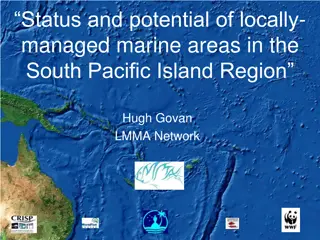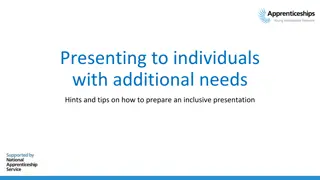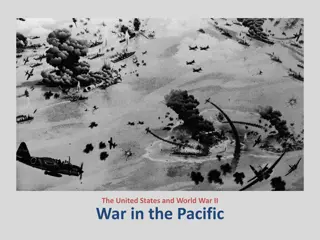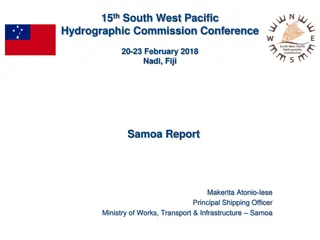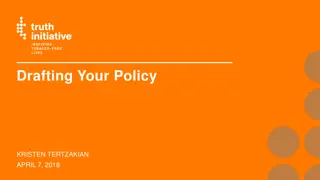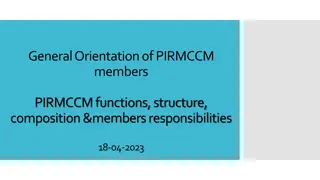Data Needs for Inclusive Development and Public Policies in the Pacific
Partnership of Pacific organizations for persons with disabilities highlights the importance of data collection and analysis for inclusive development and policy-making. The obligations and commitments outlined focus on gathering appropriate information, disaggregating data, justifying action, crafting policies, monitoring implementation, and evaluating outcomes. Understanding the prevalence and impact of disabilities, as well as addressing inequalities faced by individuals, are key aspects emphasized in designing effective policies.
Download Presentation

Please find below an Image/Link to download the presentation.
The content on the website is provided AS IS for your information and personal use only. It may not be sold, licensed, or shared on other websites without obtaining consent from the author. Download presentation by click this link. If you encounter any issues during the download, it is possible that the publisher has removed the file from their server.
E N D
Presentation Transcript
Data for inclusive development and public policies: what do we need to know? A PARTNERSHIP OF PACIFIC ORGANIZATIONS OF AND FOR PERSONS WITH DISABILITIES
Obligations and commitment Framework for Pacific Regionalism Pacific Framework on the Rights of Persons with Disabilities (PFRPD) Pacific Regional Education Framework (PacREF) Pacific Leaders Gender Equality Declaration (PLGED) Pacific Platform for Action on Gender Equality and Human Rights Framework for Resilient Development in the Pacific (FRDP). A PARTNERSHIP OF PACIFIC ORGANIZATIONS OF AND FOR PERSONS WITH DISABILITIES
Obligations and commitment CRPD article 31 Obligations to collect appropriate information on persons with disabilities and the barriers that they face to enable formulation and implementation policies Obligation to disaggregate data to monitor progress in implementation Incheon Strategy Goal 8 Obligation to improve the reliability and comparability of disability data SDG SDG related data have to be disaggregated by income, sex, age, race, ethnicity, migration status, disability and geographic location and other characteristics relevant in national contexts A PARTNERSHIP OF PACIFIC ORGANIZATIONS OF AND FOR PERSONS WITH DISABILITIES
Why do we need data? Justifying action Why is this issue of the scope and scale to require action? Designing policies How can policies be crafted to address the problems of exclusion? Who requires what, where? How much will it cost?... Monitoring implementation How can we be sure those policies are being implemented in a timely, correct fashion? Evaluating outcomes How can we document what works best? A PARTNERSHIP OF PACIFIC ORGANIZATIONS OF AND FOR PERSONS WITH DISABILITIES
Data needs for justifying action Way of identifying people with disabilities in order to: Estimate prevalence to show the scale of the population impacted Overall By region By personal characteristics age, gender, region of residence, ethnicity, etc. Importance to show the share of households that have members with disability. Exclusion faced by persons with disabilities impact their families as well. Disaggregate outcome indicators to show the scope of the problem To identify needs To measure inequalities face by persons with disabilities gaps in poverty, employment, education, health, etc. A PARTNERSHIP OF PACIFIC ORGANIZATIONS OF AND FOR PERSONS WITH DISABILITIES
6 9/23/2024 Disability is not a uniform group Some persons with disabilities are marginalized than others Global report World Federation of Deafblind, 2018 A PARTNERSHIP OF PACIFIC ORGANIZATIONS OF AND FOR PERSONS WITH DISABILITIES
Gender equality is also a disability issue (India census 2011 data) Status of women with disabilities in comparison to men with disabilities Illiteracy among women in India 44.02% among women with disabilities 55.44% 10000000 9000000 8000000 7000000 6000000 Non-worker population among women in India 19.84% Among women with disabilities - 60% 5000000 4000000 3000000 2000000 1000000 0 Literacy Illiteracy Non-Worker Populatiom Male Female A PARTNERSHIP OF PACIFIC ORGANIZATIONS OF AND FOR PERSONS WITH DISABILITIES
Households with a person with disabilities Country Percent of households with a person with a disability 22.0 % Malawi Tanzania 29.8 % Uganda 37.2 % United States 25.6 % Vietnam 23.4 % A PARTNERSHIP OF PACIFIC ORGANIZATIONS OF AND FOR PERSONS WITH DISABILITIES
The disability and development gap Recent studies have shown that in poor communities different inequalities persons with disabilities and persons without disabilities might not be that big when it comes to income or food poverty, dwellings, access to services because everybody face general barriers When community develop economically the gap increase between member with and without disabilities because disability specific barriers prevent persons with disabilities to benefit and contribute to development. This is why so much emphasis is put on inclusive development. However, in poorer and richer community persons with disabilities are always socially marginalized A PARTNERSHIP OF PACIFIC ORGANIZATIONS OF AND FOR PERSONS WITH DISABILITIES
Data needs for designing policies In addition to prevalence and inequality gaps in different groups and location, we need to know more about: Environmental data to identify barriers that need to be removed in different services Physical Informational Attitudinal Institutional The support requirement for inclusion the type, level and quality of support that people may already access from family and community and from existing programs The type, level and quality of support that people actually need to be in position participate equally (assistive devices, personal assistance, sign language interpreters ) that needs to be developed A PARTNERSHIP OF PACIFIC ORGANIZATIONS OF AND FOR PERSONS WITH DISABILITIES
The cost of disability To design effective policies, we need to know how much disability related expenses persons with disabilities and their families face today. (standard of living method with HIES) But ultimately we need to know how much they would have to spend to overcome barriers and participate equally with other members of their community A PARTNERSHIP OF PACIFIC ORGANIZATIONS OF AND FOR PERSONS WITH DISABILITIES
Beyond household data We need to know more about intrahousehold dynamics: Persons with disabilities can live in non-poor household but be very poor (multi dimensionally) themselves because they do not get any support, household resources are not allocated to them, and they cannot take part in any community activities A PARTNERSHIP OF PACIFIC ORGANIZATIONS OF AND FOR PERSONS WITH DISABILITIES
Data for monitoring implementation Administrative data can provide information on the implementation of policies Inputs financial, physical, and human Outputs structures, materials, and institutions Example: Education Management Information Systems Provides data on facilities, materials, and human resources Should be linked to budget information Later in this module we will examine a case study in more detail A PARTNERSHIP OF PACIFIC ORGANIZATIONS OF AND FOR PERSONS WITH DISABILITIES
Data for evaluation To be fully effective, an evaluation plan must be put into effect before a policy or a program begins Evaluation needs Outcome indicators that are SMART: specific, measurable, available, relevant, and timely. Baseline data Proper comparison or control groups A PARTNERSHIP OF PACIFIC ORGANIZATIONS OF AND FOR PERSONS WITH DISABILITIES
What do we want to know from data? And what the census can tell? how do we use the census monograph to identify data gaps that need to be covered with other instruments how do we make this data accessible to persons with disabilities A PARTNERSHIP OF PACIFIC ORGANIZATIONS OF AND FOR PERSONS WITH DISABILITIES
Summary of data needs Who has a disability? Prevalence, age of onset, location, gender, household What is the level of inclusion or exclusion? Inequality of outcomes and access to services and opportunities What are the barriers? Barrier faced in their home, community, services Level and type of support Met and unmet needs for support and assistance A PARTNERSHIP OF PACIFIC ORGANIZATIONS OF AND FOR PERSONS WITH DISABILITIES
What can we get out of census? Census can provide a lot of information about prevalence and inequalities We can infer about barriers and support Level of inequality give an indication on the barrier for persons with disabilities must be facing Type and level of services associated with some functional difficulties (people who cannot at all see would most likely require support services for blind persons ) We will emphasize specific elements in addition to the work already done A PARTNERSHIP OF PACIFIC ORGANIZATIONS OF AND FOR PERSONS WITH DISABILITIES
Importance of disaggregation As we said persons with disabilities are not an homogenous group so we need to disaggregate census data by Type of functional difficulties Age Sex Location We also need to know about Persons with deafblindness (at least a lot of difficulties in seeing and hearing) People with some difficulties in more than 2 domains (they might not identify as persons with disabilities but can face significant restriction of participation (mostly old people) A PARTNERSHIP OF PACIFIC ORGANIZATIONS OF AND FOR PERSONS WITH DISABILITIES
Level of inequality of outcome and access Beyond difference between persons with and without disabilities, additional analysis across domain and sectors should be done on : Difference among persons with disabilities by type of functional difficulties Comparison between women with disabilities and women without disabilities as well as men with disabilities to identify possible gender based discrimination and multiple discrimination Location: difference in outcome across sectors could demonstrate greater barriers faced in some location (of course between capital and outer islands but also among islands that would trigger further analysis on why?) Using mapping visualization could be very useful. A PARTNERSHIP OF PACIFIC ORGANIZATIONS OF AND FOR PERSONS WITH DISABILITIES
Right to home and family life: What are the size of household with persons with disabilities? Are persons with disabilities most likely to live in single person household? Do persons with disabilities which are young and or working age have the same opportunities to start a family or to head a household as persons without disabilities Do people with disabilities stay within their parents household longer or not than people without disabilities? Is it the same in the capital and outer islands? For men and women? A PARTNERSHIP OF PACIFIC ORGANIZATIONS OF AND FOR PERSONS WITH DISABILITIES
Living conditions Beyond the analysis usually done: Level of poverty of household with and without persons with disabilities controlled for age and household compositions Level of poverty of household headed by persons with disabilities Level of poverty of single member household of persons with disabilities Type of housing A PARTNERSHIP OF PACIFIC ORGANIZATIONS OF AND FOR PERSONS WITH DISABILITIES
Education Enrollment Completion For all ages for men and women with and without disabilities A PARTNERSHIP OF PACIFIC ORGANIZATIONS OF AND FOR PERSONS WITH DISABILITIES
DPO involvement is crucial Persons with disabilities through their lived experience have a unique perspective Considering the diversity of persons with disabilities and the extent of barriers and discriminations they face is not always straightforward Their lived experience and perspective will help frame the analysis of data, and decide which data are missing. Getting involved in analysis will also increase ownership over data and provide a common evidence basis for dialogue with policy makers Recommendations and conclusions should also be developed with DPOs A PARTNERSHIP OF PACIFIC ORGANIZATIONS OF AND FOR PERSONS WITH DISABILITIES
Thank you! Ms Laisa Vereti Manager Planning, Policy & Advocacy Pacific Disability Forum Ground Floor, Kadavu House, Victoria Parade | GPO Box 18458 | Suva, Fiji Phone: (+679) 3312008 | (+679) 3307530 Mobile: (+679) 7519870 (Digicel) Fax: (+679) 3310469 Skype: Laisa_quetty Email: mppa@gmail.com Website: www.pacificdisability.org A PARTNERSHIP OF PACIFIC ORGANIZATIONS OF AND FOR PERSONS WITH DISABILITIES
